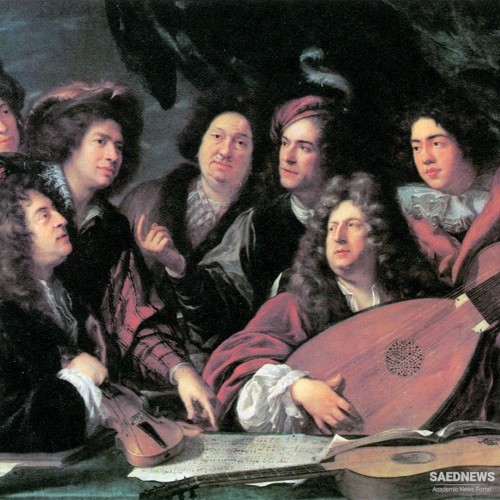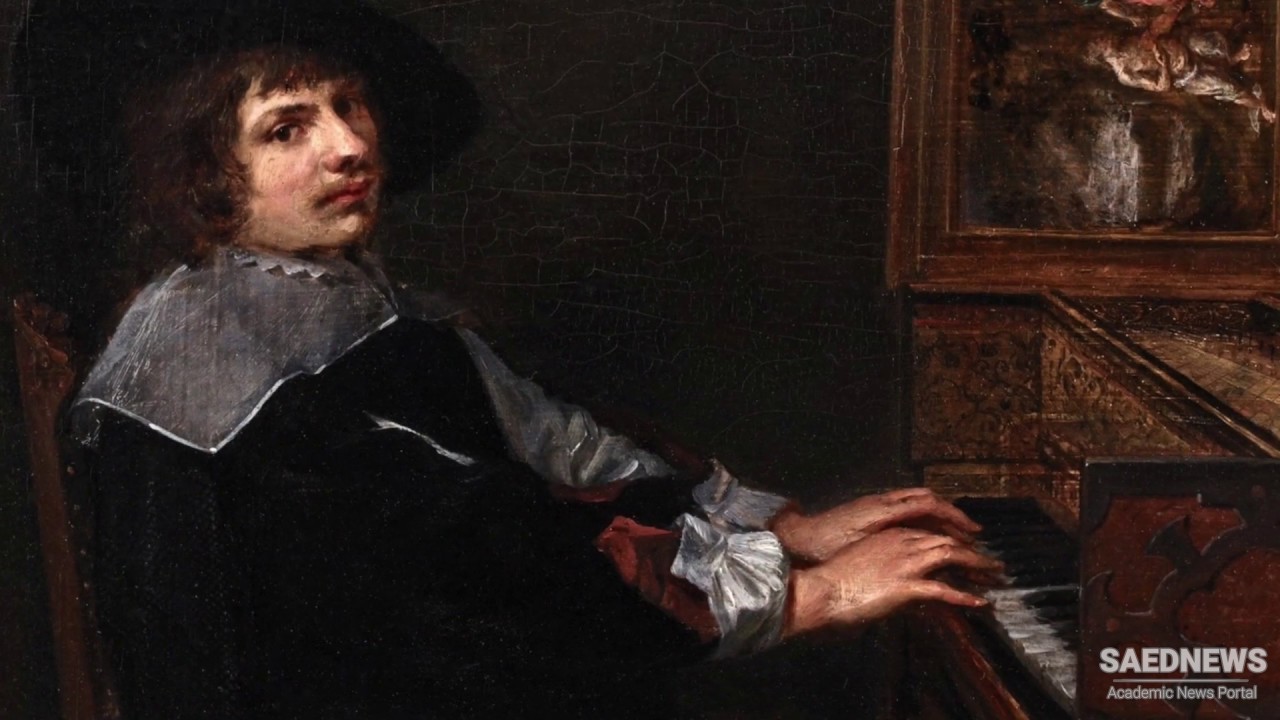Not only did he know the French virtuosi intimately (like Chambonnières and Couperin, he wrote a tombeau for M. Blanchrocher, the celebrated Parisian clavecinist), but he was highly regarded by these Parisian virtuosi as their friend and equal. He was first of all a performer; his composition stemmed from his interests as a performer, consisting almost entirely of toccatas, suites, Capriccios, canzonas, fantasias, and ricercars (no operas, cantatas, or sacred concertos). His composing fell mostly in the 1640s and 1650s, at his principal place of employment, the imperial court in Vienna. While still rhapsodic, Froberger’s toccatas are smoother than Frescobaldi’s; with fewer stunning effects, they have greater harmonic focus. Froberger’s toccatas are dominated by figural diminution, with a slight reduction in the importance of imitation. The canzonas and Capriccios, on the other hand, tend to be more imitative, with a corresponding reduction in the amount of purely figural sections. Of all these imitative forms, Froberger favored the capriccio, using animated subjects of considerable character.
Froberger composed some thirty sets of keyboard dances in the French manner; the earlier ones consist of allemande, courante, and sarabande. Gigues were added later, but did not assume a regular station after the sarabande until the important publication of Froberger’s compositions in 1693. The sarabandes are particularly effective, with even richer, more poignant harmonies than the French ones. Animated lyricism marks almost all of Froberger’s work, yet the several lamentations— highly figured allemandes like the tombeaux of Chambonnières—have a pathos and gravity that rival Cavalli.

An appreciation of Froberger’s accomplishments was apparently passed across the German heartland to the north, to Hamburg, through Mathias Weckmann (1621–1674). Weckmann was one of a group of German composers that included Thomas Selle (1599–1663), Franz Tunder (1611–1667), and Christoph Bernhard (1627–1692)—earnest, competent men but untouched by the Italian glory, even though Weckmann and Bernhard were pupils of Schütz. The only composer of that group who seemed to catch fire was the erratic Johann Rosenmüller (1619–1684), active in Hamburg, and then, significantly, drawn to Venice. Rosenmüller’s sacred concertos, for example, Confitebor tibi, are brilliant applications of the new Italian style to sacred texts.
The most impressive accomplishments in the extreme north were in organ music and organ performance, in the person of Dietrich Buxtehude (1637?–1707). Born in Denmark, and then permanently fixed in Lübeck (close to Hamburg on the Baltic), Buxtehude was to the north what Froberger was to the south. In them, and only in them, was the art of Frescobaldi brought to fulfillment. Buxtehude also wrote excellent sacred concertos in modern style, with and without a chorale. Those with a chorale were sometimes in very simple form—as if an arietta for chorus. But chorale concertos could also assume grand proportions, as in Herzlich lieb hab ich dich, O Herr, where the chorale tune is set down, in expanded form, on top of the varied, sectional structure usual for the sacred concerto. This work approaches an oratorio, both in dimensions and dramatic shape; the several sections call for dramatic projection in keeping with the meaning of the text and the stylistic idioms used to accent it.
It is in Buxtehude’s organ works, however, that his full brilliance shows forth—or better, explodes, so violent is the interaction of Italian drama with Northern thoroughness. At the center stand the mighty preludes, which are really toccatas, huge, sectional works using an alternation of figurai and imitative textures (the term praeludium seems to describe the liturgical function of these toccatas as introductions to the service). The figuration becomes sheer fantasy, exuberant beyond Frescobaldi’s. Such figuration must, of course, be imagined in the brilliant sounds of Buxtehude’s organ. The imitative sections, also highly colorful, are extended to great lengths, sometimes at the expense of the figural sections; these are then reduced to introduction and conclusion, framing the imitative section.
Buxtehude seems to have extrapolated from what he knew of Frescobaldi (and the earlier Froberger); exaggerating the contrasts of Frescobaldi, Buxtehude diverged from Froberger’s increased smoothness and sense of harmonic refinement. Buxtehude’s style reaches a climax in a passacaglia in D minor, and two ciaconas, in E minor and C minor. From the kinds of figuration Buxtehude applies (especially in the ciaconas), he seems to have had French models before him as well as Italian ones. At any rate these gigantic ostinato pieces have the same dizzy effect as the operatic passecailles and chaconnes of Lully written in the same decades. Buxtehude’s special gift was rhapsodic effusion, which expressed itself best in the toccatalike shape of his preludes. He also imposed this shape on chorales to produce the chorale fantasia. He let the chorale tune run throughout the sectional shape, unifying its sections (in much the same way that Frescobaldi, Sweelinck and others sometimes made each section of a toccata or fantasia a variation on a single subject).
The presence of the chorale does not, however, impede the free flow of figuration and counterpoint. The use of chorales is especially important in a smaller kind of piece that functioned like the old intonazione, that is, to introduce a sung portion of the service, in this case the congregational chorale. In these chorale intonations, or chorale preludes (as they are usually called), Buxtehude superimposed the chorale tune on the typically short intonation, treating it like a miniature toccata or fantasia. The chorale tune ran through once, usually in the top voice, but participating so actively in the figuration and imitative counterpoint that its presence was sometimes more felt than heard. Buxtehude wrote some thirty of these exquisite pieces, less magnificent than the big toccata preludes but more expressive. They are more modern in their implications than the toccata, being the counterpart of the closed aria forms, rather than the grandiose pathos scenes in recitative characteristic of Cavalli in the 1650s.


 Lomax, Maccoll, and Lloyd
Lomax, Maccoll, and Lloyd














































